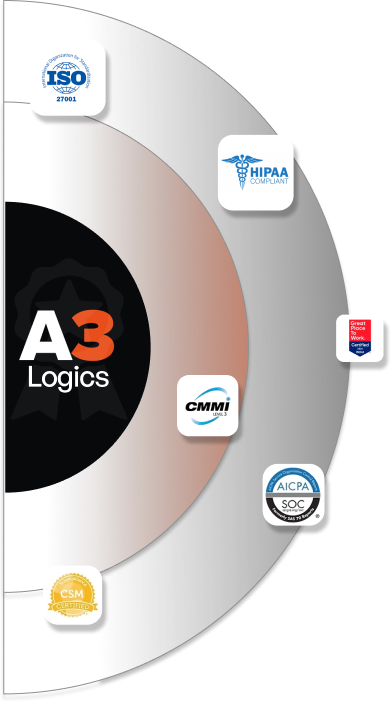Table of Contents
Introduction to Robotic Process Automation
Are you thinking about investing in RPA or robotic process automation? You have certainly landed on the right page, as we are here to help you understand the two prime technologies that not only automate repetitive tasks but also resolve complex problems as per business needs. We all understand how the need for RPA can vary in terms of finance, healthcare, and customer support. But it will certainly make the work efficient and completely curb operational expenses. The two tools that we are going to discuss the difference here are UiPath vs Blue Prism, which make the job easier for all organizations to implement automation in their existing IT infrastructure.
If you are unable to decide which tool to consider, then we are here to help you understand every aspect about these tools to make the right decision and then proceed ahead with clarity of choosing the different RPA tools for your specific needs and requirements.

Overview of UiPath vs Blue Prism: Introduction
UiPath and Blue Prism are two of the most recognized names in the RPA landscape.
UiPath RPA Tool:
Launched in 2005, UiPath is celebrated for its user-friendly interface and extensive community support. It provides a visual workflow editor that simplifies the creation and management of automation processes. Key features include Orchestrator for managing bots, Studio for designing workflows, and AI Fabric for incorporating machine learning into automation tasks. UiPath’s flexibility makes it suitable for businesses of all sizes, enabling rapid deployment and scalability.
Blue Prism RPA Tool:
Founded in 2001 and now part of SS&C Technologies, Blue Prism is known for its enterprise-grade solutions. It emphasizes robust security features and scalability, making it ideal for large organizations with complex automation needs. Blue Prism’s architecture supports backend automation and integrates seamlessly with existing systems. Its focus on security and compliance has made it a preferred choice for industries like finance and healthcare.
Key Features of UiPath and Blue Prism
UiPath stands out with several key features that enhance its usability:
1. User-Friendly Interface:
UiPath is renowned for its intuitive user interface, which significantly enhances usability for individuals with minimal technical expertise. The drag-and-drop functionality allows users to create automation workflows quickly and efficiently, eliminating the need for extensive programming knowledge. This design philosophy reduces the learning curve associated with deploying RPA solutions, enabling organizations to onboard new users swiftly.
The visual nature of the workflow designer means that users can easily understand and modify automation processes, fostering collaboration between technical and non-technical teams. Additionally, the platform offers a variety of pre-built templates and components, further simplifying the automation development process and allowing businesses to implement solutions rapidly. This accessibility empowers organizations to leverage RPA technology effectively, driving efficiency and productivity across various departments.
2. Integration Capabilities:
One of UiPath’s standout features is its extensive integration capabilities with a wide range of applications and systems. The platform supports seamless connectivity with popular software such as Microsoft Office Suite, SAP, Salesforce, and various web applications. This versatility enables businesses to automate processes that span multiple platforms, ensuring that data flows smoothly between systems without manual intervention.
By providing pre-built connectors and APIs, UiPath simplifies the integration process, allowing organizations to focus on automating their workflows rather than dealing with complex technical configurations. This capability is particularly beneficial for enterprises that rely on diverse software ecosystems, as it ensures that automation efforts can be implemented across different departments and functions. Ultimately, UiPath’s robust integration options enhance its effectiveness as a popular RPA tool, enabling organizations to achieve comprehensive automation solutions tailored to their specific needs.
3. Community Support:
The active UiPath community is a significant asset for users seeking guidance and support throughout their automation journey. This vibrant ecosystem includes forums, online communities, webinars, and training materials that provide valuable resources for troubleshooting issues and sharing best practices. Users can connect with experienced developers and fellow practitioners to exchange ideas, seek advice, and learn from one another’s experiences. UiPath also offers a dedicated learning platform called UiPath Academy, where users can access free courses covering various aspects of RPA development.
This commitment to community engagement fosters a collaborative environment where users can continuously improve their skills and stay updated on the latest advancements in RPA technology. As a result, organizations benefit from enhanced knowledge sharing and support networks that empower them to maximize the potential of their automation initiatives.
4. Scalability:
Scalability is a critical feature of the UiPath platform that allows organizations to expand their automation efforts as needed. UiPath supports both attended (user-triggered) and unattended (fully automated) bots, providing flexibility in how automation is deployed across different business processes. Attended bots assist users in real-time by automating repetitive tasks while they work, enhancing productivity without disrupting workflows.
Unattended bots operate independently in the background, executing tasks without human intervention, which is ideal for high-volume processes requiring consistency and speed. This dual approach enables organizations to tailor their automation strategies based on specific business requirements and operational demands. Furthermore, UiPath’s architecture allows for easy scaling of bot deployment across departments or business units without compromising performance or reliability. As businesses grow or evolve, UiPath ensures that their automation capabilities can adapt accordingly.
Key Features of Blue Prism
1. Robust Security:
Blue Prism places a strong emphasis on security, making it particularly suitable for industries that handle sensitive data such as finance and healthcare. The platform incorporates advanced security features including encryption protocols for data at rest and in transit, ensuring that information remains protected from unauthorized access during automation processes.
Additionally, Blue Prism offers secure credential management capabilities that allow organizations to store sensitive information, such as passwords, securely within the platform. Compliance controls are also integrated into the system to help organizations adhere to industry regulations such as GDPR or HIPAA. This focus on security not only safeguards critical business data but also instills confidence among stakeholders regarding the integrity of automated processes. By prioritizing security in its design, Blue Prism enables businesses to implement RPA without compromising data protection or regulatory compliance.
2. Scalability:
Blue Prism is engineered for scalability, allowing large enterprises to deploy numerous bots across various departments efficiently. Its architecture supports high-volume operations without compromising performance or reliability. Organizations can scale their automation initiatives by adding more bots as needed to handle increased workloads or expanding into new business areas without significant reconfiguration or downtime.
This capability is crucial for businesses operating in dynamic environments where demand fluctuations are common. Additionally, Blue Prism’s centralized management console enables IT teams to monitor bot performance and resource allocation effectively, ensuring optimal utilization of available resources. With its scalability features, Blue Prism empowers organizations to grow their automation capabilities in alignment with business objectives while maintaining operational efficiency.
3. Backend Automation:
Blue Prism excels at automating backend processes that are often complex and require seamless integration with legacy systems. Its architecture is specifically designed to handle intricate workflows involving multiple applications and databases without disrupting existing operations. For instance, tasks such as data entry, report generation, and invoice processing can be automated efficiently using Blue Prism’s capabilities. By reducing manual intervention in these backend processes, organizations can achieve greater accuracy and speed while minimizing errors associated with human handling of data.
Furthermore, Blue Prism’s ability to integrate with various systems allows it to pull information from different sources seamlessly, ensuring that automated tasks are executed based on real-time data availability. This focus on backend automation enhances overall operational efficiency while freeing up human resources for more strategic initiatives.
4. Customizable Solutions:
One of Blue Prism’s key strengths lies in its ability to offer customizable solutions tailored to meet specific business requirements. Users can design workflows that cater directly to their operational needs through customizable bots capable of performing various tasks based on predefined rules or conditions. This flexibility ensures that organizations can adapt their automation strategies as they evolve over time—whether it involves scaling up operations or adjusting processes based on changing market dynamics or regulatory requirements.
Additionally, Blue Prism provides tools for monitoring bot performance and analytics features that allow users to assess the effectiveness of their automated workflows continuously. By enabling customization at every level—from bot design through deployment—Blue Prism empowers organizations to create targeted automation solutions that drive efficiency while aligning closely with business objectives.
UiPath vs. Blue Prism: Key Differences
| Feature | UiPath | Blue Prism |
| Ease of Use | User-friendly interface | Requires technical expertise |
| Scalability | Suitable for all business sizes | Best for large enterprises |
| Integration | Pre-built connectors | Manual configuration required |
| Security | Standard security protocols | Advanced enterprise-grade security |
| Pricing Model | Subscription-based | Per-bot licensing |
| Community Support | Extensive developer community | Limited community resources |
| Deployment | Rapid deployment | Requires detailed planning |
Use Cases of UiPath vs Blue Prism
>Use Cases of UiPath
UiPath is particularly effective in scenarios requiring rapid deployment:
- Customer Service Automation: Businesses can automate customer inquiries through chatbots or automated ticketing systems, improving response times and customer satisfaction while reducing the workload on human agents.
- Data Entry Automation: Organizations can automate data entry tasks across multiple platforms, minimizing errors associated with manual input and freeing employees to focus on higher-value activities.
- Healthcare Process Automation: In healthcare settings, UiPath can streamline patient record management by automating data extraction from various sources. It ensures compliance with regulations while enhancing operational efficiency.
> Use Cases of Blue Prism
Blue Prism shines in industries where security and scalability are paramount:
- Financial Services Automation: Financial institutions can automate compliance checks, fraud detection processes, and transaction monitoring. This helps to ensure regulatory adherence while reducing operational costs.
- Supply Chain Optimization: Companies can automate inventory management processes by integrating Blue Prism with existing ERP systems. It enables real-time tracking and efficient procurement processes.
- IT Operations Management: IT departments can use Blue Prism to automate routine maintenance tasks such as system updates or data backups. Hence, it helps in ensuring minimal downtime while enhancing overall productivity.
When to Use UiPath?
When an organization needs a versatile solution that values simplicity, it should think about utilizing UiPath. Its simple design lets non-technical people quickly build automation workflows without great coding skills. For small to medium-sized companies wanting to use RPA without major upfront expenditure or technical burden, this is perfect.
UiPath’s features in attended automation situations when human involvement is required will also help firms concentrating on front-end automation, such as sales operations or customer care. A free Community Edition lets companies play around with the technology first before spending money on it.
When to Use Blue Prism?
Large companies wanting strong security requirements and scalability in their RPA systems will find Blue Prism most appropriate. Not only this, companies in regulated sectors like banking or healthcare would especially benefit from Blue Prism’s as it focuses on compliance and data protection. Its design preserves performance and security while supporting complicated backend automation activities needing smooth interface with current systems.
Although it could demand more technical knowledge than UiPath, companies with knowledgeable IT departments can use its features to develop complex automation systems fit for their particular operating requirements.
Final Thoughts
Hopefully you are clear about the differences between the both UiPath vs Blue Prism. They both offer powerful RPA development services that are completely tailor made to your needs and requirements.
We all know how UiPath excels in user-friendliness and versatility, that is completely suitable for business. But, when it comes to Blue Prism, it stands out with its robust security features. So, the choice completely depends on the specific business requirements of the organization







